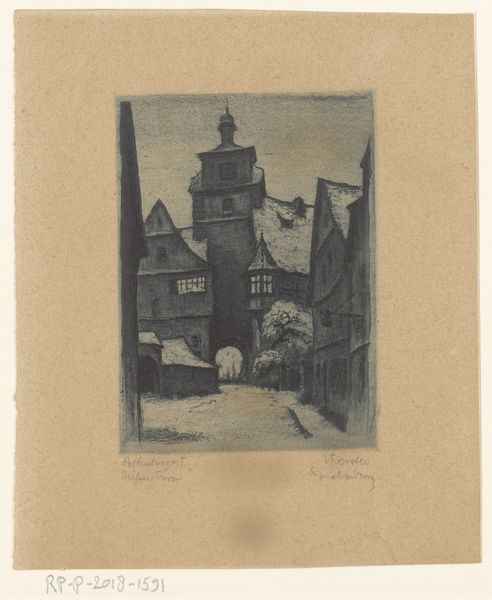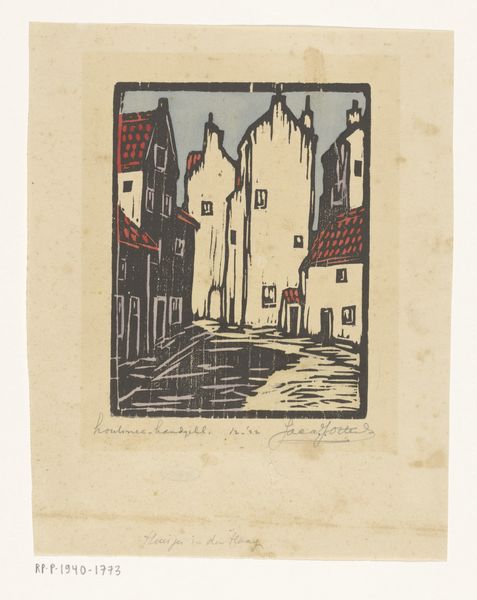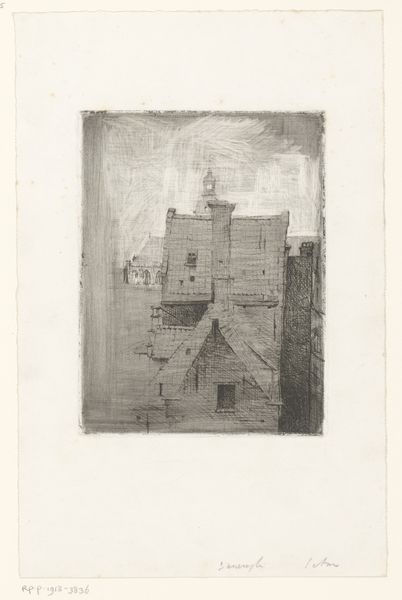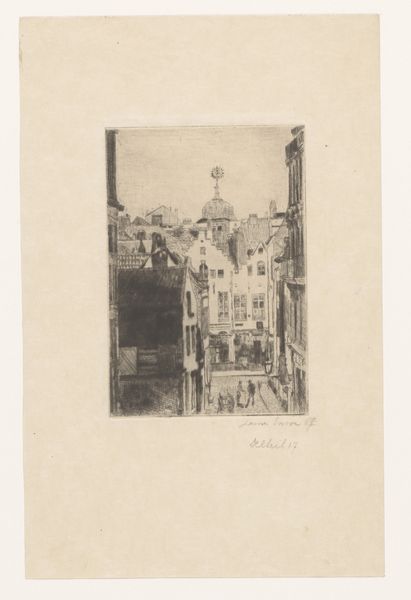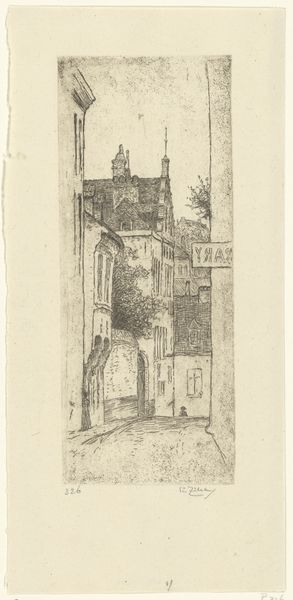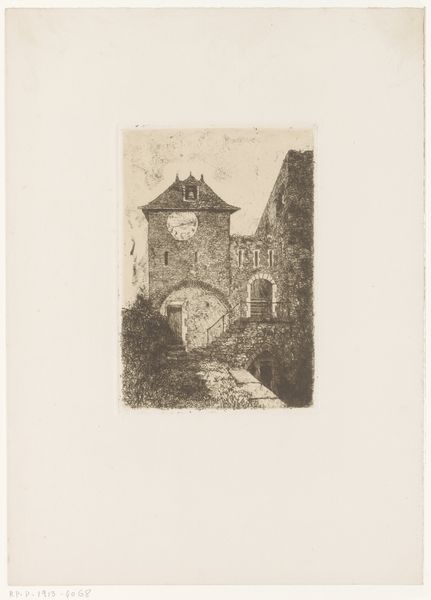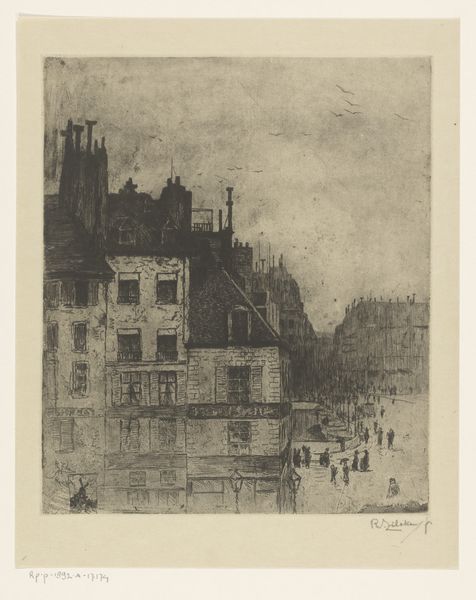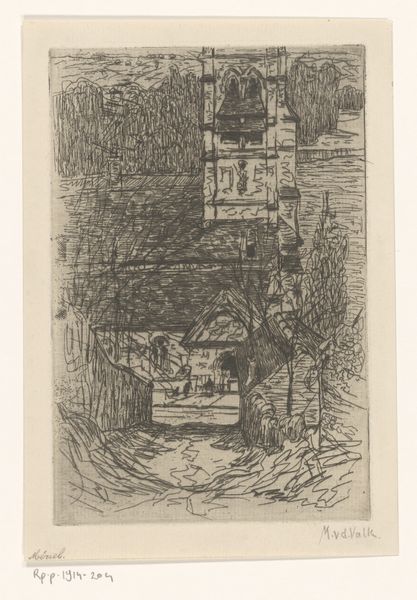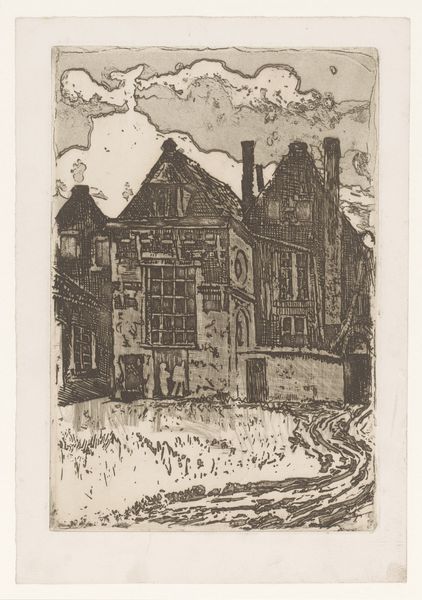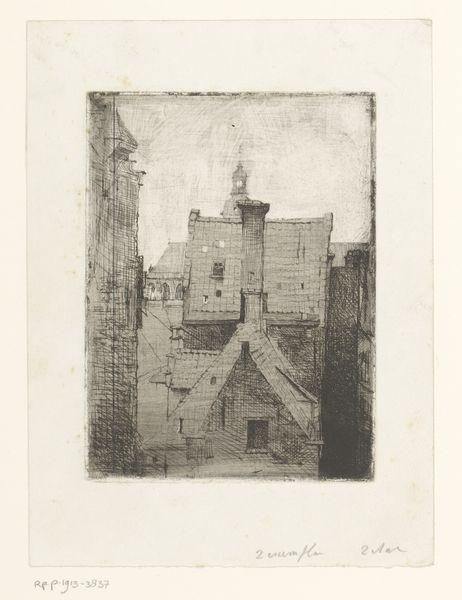
drawing, watercolor
#
drawing
#
aged paper
#
toned paper
#
sketch book
#
landscape
#
personal sketchbook
#
watercolor
#
ink colored
#
sketchbook drawing
#
cityscape
#
watercolour bleed
#
watercolour illustration
#
sketchbook art
#
modernism
#
watercolor
Dimensions: height 295 mm, width 230 mm
Copyright: Rijks Museum: Open Domain
Editor: This is "Kloosterpoort, Hoorn" by Dick Ket, made in 1927, using watercolor and ink on toned paper. There's a quiet melancholy to it, like a hidden world. What do you see in this piece? Curator: I see a representation of how urban environments shape social experience, and how this can become inscribed on the very paper of the artwork. Ket captures Hoorn's architecture but simultaneously gives us insight into modernist notions of alienation, particularly his own given his ill health and social isolation. This wasn't a commission; it comes from a sketchbook. Editor: So, it's a personal statement? How does the setting amplify that? Curator: Yes, consider that the ‘Kloosterpoort’ translates to ‘Monastery Gate.’ These religious structures often represent boundaries, exclusion but also refuge. In a rapidly changing world, these architectures can speak to experiences of being ‘othered’, but also about the importance of community. Do you think he's using the watercolour technique to echo transience? Editor: That's interesting. The light washes certainly lend themselves to a sense of the fleeting moment, but also to an atmosphere that feels dreamlike, or fading. I hadn't considered the impact of the title either; it really frames the piece. Curator: Precisely! And thinking about Ket’s personal struggles and positioning the monastery as a possible point of solace complicates and enriches our interpretation. We begin to think about this ‘sketchbook art’ as resistance to traditional art and to norms in general. Editor: I see now, thank you, that context shifts my reading of the art! It becomes not just a depiction, but an embodied response to social forces. Curator: Exactly. By connecting art to broader social issues, we open the doors to more equitable, multifaceted interpretations.
Comments
No comments
Be the first to comment and join the conversation on the ultimate creative platform.
